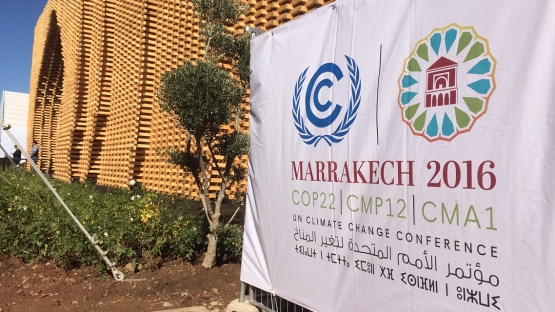The IAEA is participating in the Morocco Climate Change Conference, also known as COP22, over the next two weeks, and will inform delegates about the contribution of nuclear and isotopic techniques to combating climate change. Nuclear techniques can be used to both mitigate and help adapt to the consequences of climate change.
The 22nd Conference of Parties (COP22) to the United Nations Framework Convention on Climate Change (UNFCCC), taking place from 7 to 18 November in Marrakech, provides a platform for countries to present their climate change strategies.
"Nuclear power has already made a significant contribution to avoiding carbon dioxide emissions and it will continue to do so," said IAEA Director General Yukiya Amano on 4 November in a statement marking the entry into force of the Paris Agreement, which was concluded last year.
In order to assess the impact of climate change on the environment and ecosystems, a precise understanding of what is happening to species at an atomic scale is required. Nuclear science can enable Parties to the UNFCCC to evaluate changes in the carbon cycle and observe the impacts of ocean acidification caused by increased carbon dioxide (CO2) concentrations and other stressors on sensitive marine ecosystems and species.
"Nuclear and isotopic techniques make an important contribution to tackling serious environmental challenges such as desertification, soil erosion, pollution and deteriorating water quality," Mr Amano said.
At COP22, the IAEA will participate with other United Nations Agencies in side events related to the 17 Sustainable Development Goals (SDGs). These will include “Meeting the 2oC Challenge: Nexus of Innovation and Clean Energy” (focusing on SDG7 on affordable and clean energy), “Science for informed mitigation and adaptation choices” (focusing on SDG17 on partnerships for the goals), and “Oceans: Science based solutions for achieving adaptation and mitigation goals” (focusing on SDG14 on life below water).
An IAEA exhibit will provide information on the Agency’s work related to climate change, highlighting recent publications such as Nuclear Power and the Paris Agreement, Nuclear Power and Sustainable Development and Climate Change and Nuclear Power.
“The IAEA is committed to helping interested Member States to use nuclear science and technology to generate low-carbon electricity for development, and to counter the effects of climate change,” Mr Amano said.





